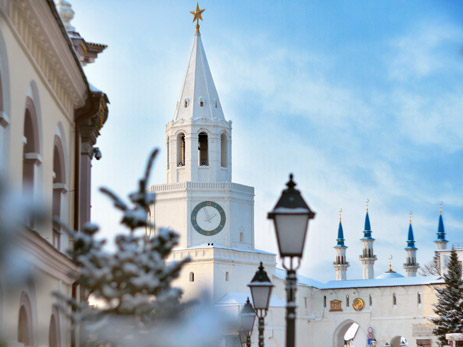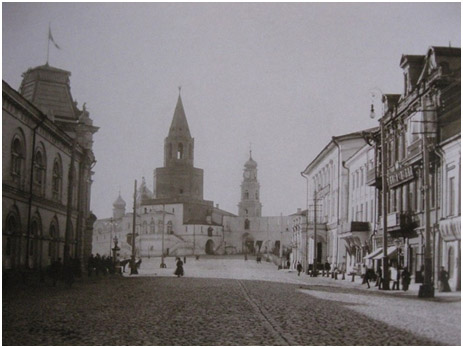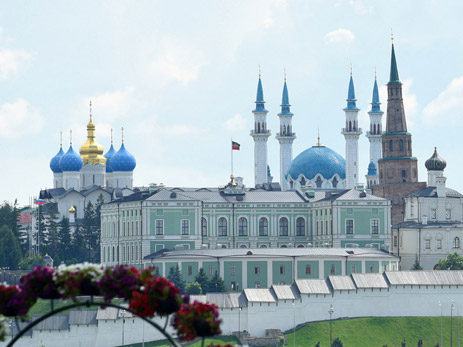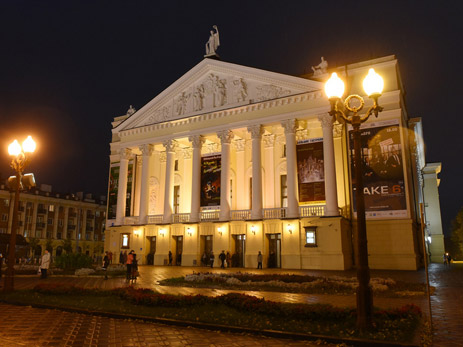Kazan
History of Kazan
Kazan is the capital of the Republic of Tatarstan, an ancient city with a centuries-old history, located on the left bank of the Volga River. It is a model city where different religions and cultures peacefully coexist.

Kazan was founded as a stronghold on the northern borders of Volga Bulgaria more than 1000 years ago. The age of the city was determined during the excavations on the territory of the Kazan Kremlin. The Czech coin was found then, dated from 929-930, and the remains of masonry and the wooden city wall and utensils.
In 1438, the Bulgarian fortress was captured by the khan of the Golden Horde, and the city became the capital of the Kazan Khanate. This period was marked by the prosperity of the leather, pottery, and weapons production, establishing trade links with Moscow, the Crimea, Turkey, and other regions. In the 13th-14th centuries, Kazan was actively developing, becoming an important trade and political center within the Golden Horde State. Favorable location at the intersection of major trade routes connecting the East and West contributed to the prosperity. Kazan had been mentioned in the Russian chronicles since the XIV-XV centuries. An important milestone was the beginning of the minting of the coins.
The history of the Kazan’s formation was accompanied by military conflicts. The troops of Ivan the Terrible captured Kazan in 1552 after a series of strife with the Principality of Moscow. Most of the city was destroyed, and the Tatars were moved to the marshy shores of the Lake Kaban where the Staro-Tatarskaya Sloboda was subsequently formed. After the final suppression of the uprisings in the Kazan region, the city entered a new era of the Russian state.

The beginning of the XX century is associated with the great disturbances that Kazan experienced, becoming one of the centers of the revolution. The Tatar ASSR was established in 1920 with its capital in Kazan. Intensive industrialization of the city began in the 30s.
During the Great Patriotic War, Kazan was the rear support of the country where large factories and scientific centers found temporary shelter.
Kazan become the capital of the Republic of Tatarstan in 1990. The celebration of the Millennium of Kazan in 2005 was the remarkable event in the history of the city. Landmark objects were built in the city, such as the subway, the Kul-Sharif Mosque, the Millennium Bridge, the new hippodrome, the “Tatneft-Arena”, and other large objects. 1 million 251 thousand 969 people live in Kazan as of January 1, 2019.
Between East and West

Representatives of more than 115 nationalities live in the capital of Tatarstan. According to the 2010 census, the most numerous of them are Russians (48.6%) and Tatars (47.6%). Also, you can meet Chuvash, Ukrainians, Mari, Bashkirs and Udmurts among the citizens of Kazan.
From Chaliapin to Nowadays

The doors of 34 museums, 9 theaters, 8 large concert halls, 14 houses of culture, 50 libraries, and 50 children's art schools are open in the city.
Kazan is known all over the world by international festivals: the opera festival named after F. Chaliapin, the festival of classical ballet named after R. Nuriev, the festival of Muslim cinema, the theater festival of Turkic peoples “Nauruz”. Russia's leading theaters and world-famous stars traditionally include Kazan in their tours. The city’s museums present exhibits from the Hermitage, the Tretyakov Gallery, and the Russian Museum.
In 2019 Kazan entered the UNESCO Creative Cities Network.
Millions of tourists

The most visited places among tourists are Kazan Kremlin, Bauman Street, Family Center “Kazan”, water park “Riviera”, and other attractions.
UNESCO Protection
There are 563 objects of cultural heritage (historical and cultural monuments) under state protection in Kazan. 119 of them are of federal, 376 are republican and 68 are local. In 2000, the Kazan Kremlin was included to the list of UNESCO World Cultural Heritage in order to preserve an ordinary historical building, surrounded by monuments. More than 400 objects are subject to preservation without changing stylistic features. Thus, the unique historical heritage of Kazan will be preserved for future generations.

